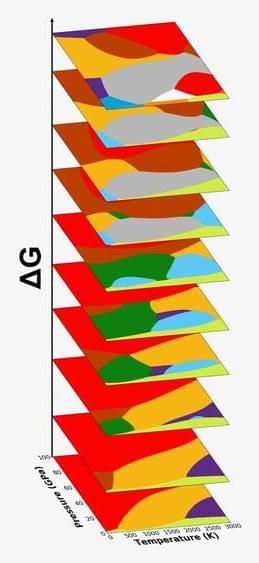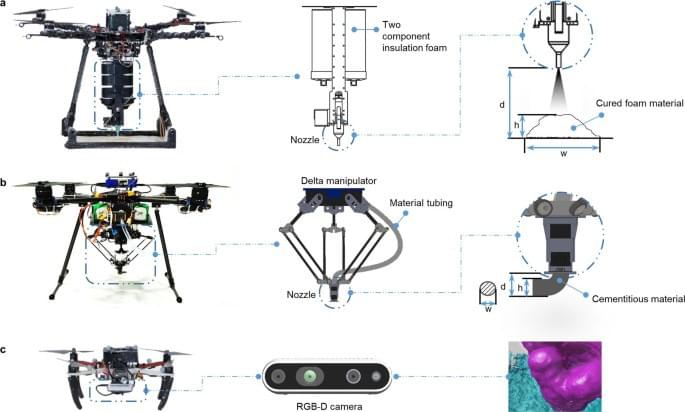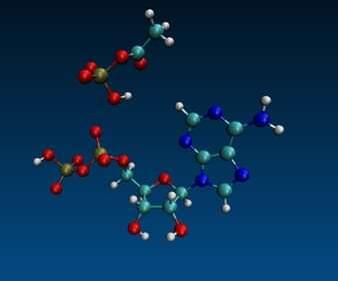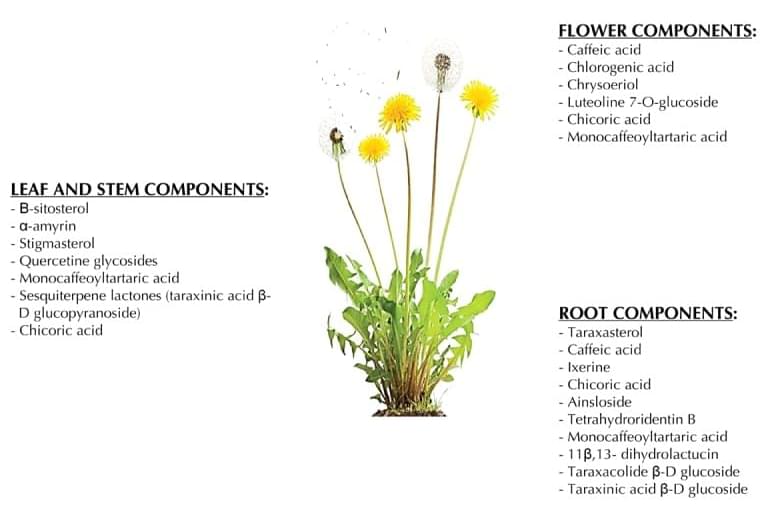Now, an experimental NASA technology designed to cool equipment in space could drastically reduce electric vehicle (EV) charging times to five minutes or less, a NASA blog post reveals.


Ben Goertzel, PhD, is author of many books on artificial intelligence including Ten Years to the Singularity if We Really Really Try; Engineering General Intelligence, Vols. 1 and 2; The Hidden Pattern: A Patternist Philosophy of Mind; and The Path to Posthumanity. He is also editor (with Damien Broderick) of an anthology about parapsychology titled, Evidence for Psi: Thirteen Empirical Research Reports. He is chief scientific officer for Hanson Robotics in Hong Kong.
Here he notes that, while the question of reincarnation in robots seems outlandish, most of our present technology would have seemed nonsensical and incomprehensible to earlier generations of humans. He quotes the 14th Dalai Lama who suggested (half-jokingly) that artificial intelligence programmers of the future might incarnate into robots. He cites Stephen Braude’s book, Immortal Remains, as demonstrating that we must consider some version of consciousness operating outside of the body. He outlines the sort of scientific and metaphysical models that might lead to such a development.
New Thinking Allowed host, Jeffrey Mishlove, PhD, is author of The Roots of Consciousness, Psi Development Systems, and The PK Man. Between 1986 and 2002 he hosted and co-produced the original Thinking Allowed public television series. He is the recipient of the only doctoral diploma in “parapsychology” ever awarded by an accredited university (University of California, Berkeley, 1980). He is also past-president of the non-profit Intuition Network, an organization dedicated to creating a world in which all people are encouraged to cultivate and apply their inner, intuitive abilities.
(Recorded on April 29, 2016)

A new computational approach will improve understanding of different states of carbon and guide the search for materials yet to be discovered.
Materials—we use them, wear them, eat them and create them. Sometimes we invent them by accident, like with Silly Putty. But far more often, making useful materials is a tedious and expensive process of trial and error.
Scientists at the U.S. Department of Energy’s (DOE) Argonne National Laboratory have recently demonstrated an automated process for identifying and exploring promising new materials by combining machine learning (ML)—a type of artificial intelligence—and high performance computing. The new approach could help accelerate the discovery and design of useful materials.
The goal is to enable the printing of large, complex shaped structures, on any surface, using a swarm of drones, each depositing whatever material is required. It’s a bit like a swarm of wasps building a nest, into whatever little nook they come across, but on the wing.
Even in technical disciplines such as engineering, there is much we can still learn from nature. After all, the endless experimentation and trials of life give rise to some of the most elegant solutions to problems. With that in mind, a large team of researchers took inspiration from the humble (if rather annoying) wasp, specifically its nest-building skills. The idea was to explore 3D printing of structures without the constraints of a framed machine, by mounting an extruder onto a drone.
As you might expect, one of the most obvious issues with this attempt is the tendency of the drone’s to drift around slightly. The solution the team came up with was to mount the effector onto a delta bot carrier hanging from the bottom of the drone, allowing it to compensate for its measured movement and cancel out the majority of the positional error.

The printing method relies upon the use of two kinds of drone. The first done operates as a scanner, measuring the print surface and any printing already completed. The second drone then approaches and lays down a single layer, before they swap places and repeat until the structure is complete.

A simple two-carbon compound may have been a crucial player in the evolution of metabolism before the advent of cells, according to a new study published October 4 in the open access journal PLOS Biology, by Nick Lane and colleagues of University College London, U.K. The finding potentially sheds light on the earliest stages of prebiotic biochemistry, and suggests how ATP came to be the universal energy carrier of all cellular life today.
ATP, adenosine triphosphate, is used by all cells as an energy intermediate. During cellular respiration, energy is captured when a phosphate is added to ADP (adenosine diphosphate) to generate ATP; cleavage of that phosphate releases energy to power most types of cellular functions. But building ATP’s complex chemical structure from scratch is energy intensive and requires six separate ATP-driven steps; while convincing models do allow for prebiotic formation of the ATP skeleton without energy from already-formed ATP, they also suggest ATP was likely quite scarce, and that some other compound may have played a central role in conversion of ADP to ADP at this stage of evolution.
The most likely candidate, Lane and colleagues believed, was the two-carbon compound acetyl phosphate (AcP), which functions today in both bacteria and archaea as a metabolic intermediate. AcP has been shown to phosphorylate ADP to ATP in water in the presence of iron ions, but a host of questions remained after that demonstration, including whether other small molecules might work as well, whether AcP is specific for ADP or instead could function just as well with diphosphates of other nucleosides (such as guanosine or cytosine), and whether iron is unique in its ability to catalyze ADP phosphorylation in water.
As if it weren’t enough to have AI tanning humanity’s hide (figuratively for now) at every board game in existence, Google AI has got one working to destroy us all at Ping-Pong as well. For now they emphasize it is “cooperative,” but at the rate these things improve, it will be taking on pros in no time.
The project, called i-Sim2Real, isn’t just about Ping-Pong but rather about building a robotic system that can work with and around fast-paced and relatively unpredictable human behavior. Ping-Pong, AKA table tennis, has the advantage of being pretty tightly constrained (as opposed to playing basketball or cricket) and a balance of complexity and simplicity.
“Sim2Real” is a way of describing an AI creation process in which a machine learning model is taught what to do in a virtual environment or simulation, then applies that knowledge in the real world. It’s necessary when it could take years of trial and error to arrive at a working model — doing it in a sim allows years of real-time training to happen in a few minutes or hours.

With a focus on sustainability, Germany, one of the most sought-out European destinations with a diverse offering, has launched its Autumn/Winter campaign, encouraging travellers to visit, explore, and experience its sustainable and diverse culture. From unspoilt landscapes to authentic cuisine, urban attractions to historical locales, Germany is the ultimate European destination to travel sustainably.
The Feel Good campaign encompasses a plethora of guiding tips highlighting the country’s eco initiatives providing conscious travellers with adequate tools and information on reducing their carbon footprint while touring different regions.
According to a press statement, with the German Environment Agency having set the goal to reduce greenhouse gas emissions by 65 pc by 2030, and complete neutrality by 2045, the German National Tourism Board is consistently supporting this goal through various ongoing initiatives with one of them being the Feel Good campaign.

With Executive Order 14028, a large regulatory push toward mandating the production of a software bill of materials (SBOM) began. As this new buzzword spreads, you’d think it was a miracle cure for securing the software supply chain. Conceptually, it makes sense — knowing what is in a product is a reasonable expectation. However, it is important to understand what exactly an SBOM is and whether or not it can objectively be useful as a security tool.
SBOMs are meant to be something like a nutrition label on the back of a grocery store item listing all of the ingredients that went into making the product. While there currently is no official SBOM standard, a few guideline formats have emerged as top candidates. By far, the most popular is the Software Data Package Exchange (SPDX), sponsored by the Linux Foundation.
SPDX, as with most other formats, attempts to provide a common way to represent basic information about the ingredients that go into the production of software: names, versions, hashes, ecosystems, ancillary data like known flaws and license information, and relevant external assets. However, software is not as simple as a box of cereal, and there is no equivalent to the Food and Drug Administration enforcing compliance to any recommended guidelines.

Occupation-related stress and work characteristics are possible determinants of social inequalities in epigenetic aging but have been little investigated. Here, we investigate the association of several work characteristics with epigenetic age acceleration (AA) biomarkers.
The study population included employed and unemployed men and women (n = 631) from the UK Understanding Society study. We evaluated the association of employment and work characteristics related to job type, job stability; job schedule; autonomy and influence at work; occupational physical activity; and feelings regarding the job with four epigenetic age acceleration biomarkers (Hannum, Horvath, PhenoAge, GrimAge) and pace of aging (DunedinPoAm, DunedinPACE).
We fitted linear regression models, unadjusted and adjusted for established risk factors, and found the following associations for unemployment (years of acceleration): HorvathAA (1.51, 95% CI 0.08, 2.95), GrimAgeAA (1.53, 95% CI 0.16, 2.90) and 3.21 years for PhenoAA (95% CI 0.89, 5.33). Job insecurity increased PhenoAA (1.83, 95% CI 0.003, 3.67), while working at night was associated with an increase of 2.12 years in GrimAgeAA (95% CI 0.69, 3.55). We found effects of unemployment to be stronger in men and effects of night shift work to be stronger in women.

The tremendous rise in the economic burden of type 2 diabetes (T2D) has prompted a search for alternative and less expensive medicines. Dandelion offers a compelling profile of bioactive components with potential anti-diabetic properties. The Taraxacum genus from the Asteraceae family is found in the temperate zone of the Northern hemisphere. It is available in several areas around the world. In many countries, it is used as food and in some countries as therapeutics for the control and treatment of T2D. The anti-diabetic properties of dandelion are attributed to bioactive chemical components; these include chicoric acid, taraxasterol (TS), chlorogenic acid, and sesquiterpene lactones. Studies have outlined the useful pharmacological profile of dandelion for the treatment of an array of diseases, although little attention has been paid to the effects of its bioactive components on T2D to date. This review recapitulates previous work on dandelion and its potential for the treatment and prevention of T2D, highlighting its anti-diabetic properties, the structures of its chemical components, and their potential mechanisms of action in T2D. Although initial research appears promising, data on the cellular impact of dandelion are limited, necessitating further work on clonal β-cell lines (INS-1E), α-cell lines, and human skeletal cell lines for better identification of the active components that could be of use in the control and treatment of T2D. In fact, extensive in-vitro, in-vivo, and clinical research is required to investigate further the pharmacological, physiological, and biochemical mechanisms underlying the effects of dandelion-derived compounds on T2D.
Keywords: type 2 diabetes, dandelion, chlorogenic acid, chicory acid, taraxasterol, sesquiterpene.
Abbreviations: ADP — adenosine diphosphate; AFLD — alcoholic fatty liver disease; AMPK — adenosine monophosphate-activated protein kinase; ATP — adenosine triphosphate; cAMP — cyclic adenosine monophosphate; CGA — chlorogenic acid; CoA — coenzyme A; CRA — chicory acid; DAG — diacylglycerol; DBD — DNA-binding domain; DNA — deoxyribonucleic acid; DPPH — 2,2-diphenyl-1-picrylhydrazyl; Dw — dry weight; FOS — fructose oligosaccharide; G6P — glucose-6-phosphate; GDP — guanosine 5’-diphosphate; GLP-1 — glucagon-like peptide 1; GLUT2 — glucose transporter 2; GLUT4 — muscle glucose transporter protein 4; GPCR — G protein-coupled receptor; GTP — guanosine triphosphate; HNB — 2-hydroxy-5-nitrobenzenaledehyde; HPLC — high-pressure liquid chromatography; IC50 — half maximal inhibitory concentration; IDF — International Diabetes Federation; IDX-1 — islet duodenum homeobox 1; IL-1α — interleukin 1 alpha; INS-1E — rat insulinoma clonal beta-cell line; IR — insulin receptor; IRS-1 — insulin receptor substrate 1; Km — Michaelis constant; IP3 — inositol triphosphate; IRS-1 — insulin receptor substrate 1; LBD — ligand-binding domain; LC-DAD — liquid chromatography with (photo) diode array detection; LPS — lipopolysaccharide; MAPK — mitogen-activated protein kinase; NADH — nicotinamide adenine dinucleotide; NAFLD — non-alcoholic fatty liver disease; NF-κb — nuclear factor kappa B; NO — nitric oxide; PI3K — phosphatidylinositol 3 kinase; PKA — protein kinase A; PKC — protein kinase C; PPAR-γ — peroxisome proliferator-activated receptor gamma; ROS — reactive oxygen species; RxR — retinoid X receptor; SEL — sesquiterpene lactones; SUR1 — sulphonylurea receptor 1; T2D — type 2 diabetes; TAG — triacylglycerol; TNF-α — tumor necrosis factor; TO — Taraxacum officinale; TS — taraxasterol; UPLC-MS/MS — ultra-performance liquid chromatography — tandem mass spectrometry; UV/VIS — ultraviolet visible; WHO — World Health Organization.